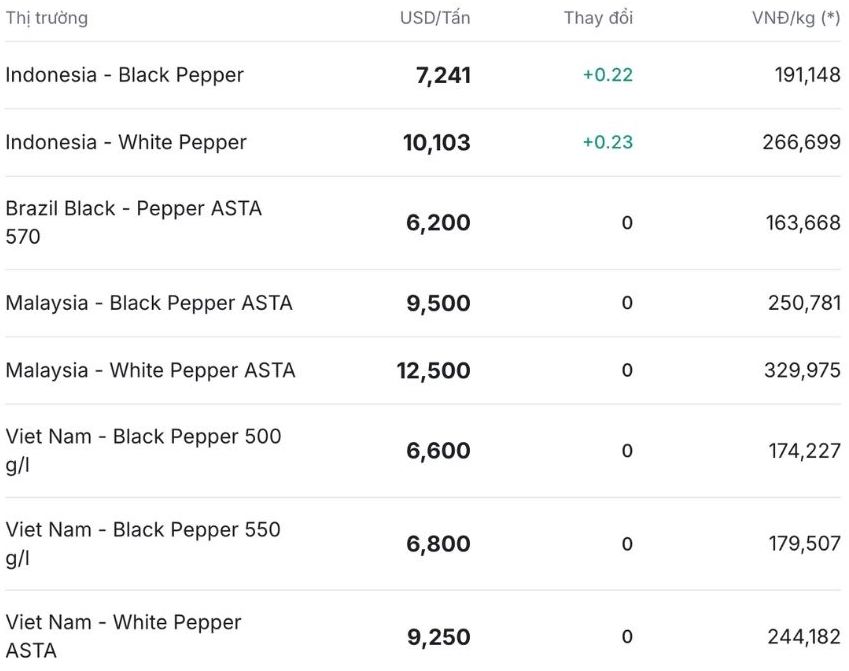Domestic pepper prices: Rising
As of 11:30 today (October 8), the domestic pepper market increased by 700 VND/kg, an average of 146,900 VND/kg. Currently, the price ranges from 146,000 - 148,000 VND/kg.
Gia Lai province today listed 146,000 VND/kg, an increase of 1,000 VND/kg, however, this is still the lowest price in the region.
Ho Chi Minh City increased slightly by VND 500/kg, to VND 146,500/kg, while Dong Nai remained unchanged at VND 146,000/kg compared to the previous session's closing price.
Lam Dong and Dak Lak set the highest threshold in the whole region at 148,000 VND/kg, an increase of 1,000 VND/kg.
World pepper prices: Continue to increase
In the world market, pepper prices are mostly stable. In particular, the Indonesian exchange - one of the most vibrant markets - maintained a slight increase of 0.22% and 0.23%. Currently, these two items are traded between 7,241 - 10,103 USD/ton (equivalent to 191,148 VND/kg - 266,699 VND/kg).
On the other hand, the Brazilian market moved sideways, staying at 6,200 USD/ton (about 163,668 VND/kg). In the same direction, black and white pepper were stable, trading at 12,500 USD/ton and 9,500 USD/ton, respectively.
In the pepper export market of Vietnam, the price of black pepper of 500 g/l and 550 g/l is stable, anchored at 6,600 - 6,800 USD/ton. ASTA white pepper prices remain high, currently standing at 9,250 USD/ton (equivalent to 244,182 VND/kg).

Assessment and forecast
Domestic pepper prices this week are forecast to continue to be stable and anchored at a high level as supply from the new harvest gradually enters the market. The psychology of "keeping" goods of growers and traders has caused transactions to increase within a narrow range, while other factors that support price promotion have not yet appeared.
In the short term, pepper prices are unlikely to increase sharply due to speculative capital flow shifting to coffee products. However, the medium-term outlook for Vietnamese pepper is still positive thanks to the risk of reduced global supply due to unfavorable weather in key growing regions such as Vietnam, India and Indonesia, while demand from the US and Europe remains stable.
The US continues to be the largest import market with more than 4,200 tons, followed by China and the UAE. In contrast, the amount of pepper imported to Vietnam has decreased by nearly half, mainly from Cambodia, Brazil and Indonesia.











